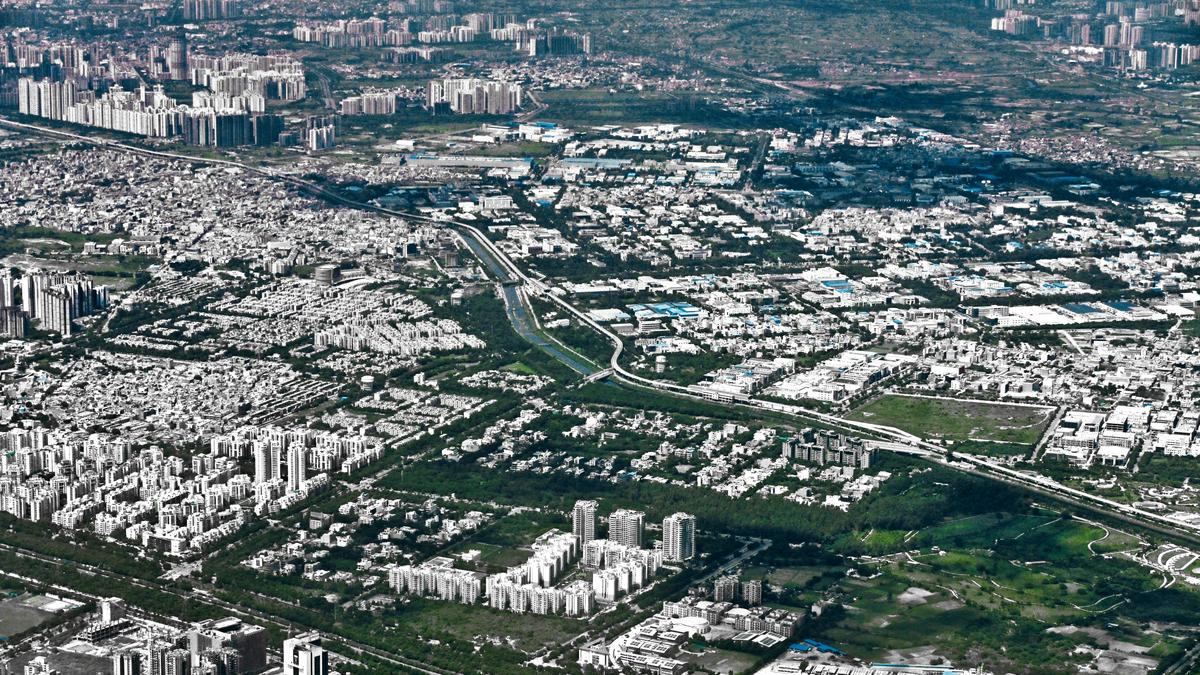
Asian cities are growing upwards more than outwards, satellite data show Premium
The Hindu
Study in Nature Cities finds cities, especially in Asia, growing upwards more than outwards, impacting infrastructure, environment, and climate.
Cities around the world, but especially in Asia, are growing upwards faster than they are spreading outwards, a new study published in Nature Cities has found. In an increasingly urban and urbanising world, taller buildings can accommodate more people in less space but they can also negatively affect existing infrastructure, the local environment, and even the climate.
“Urban population, roughly from 1990 to 2020, increased by about 2 billion people,” Steven Frolking, an earth scientist at the University of New Hampshire and the lead author of the current study, said. “So cities have had to grow in order to accommodate those 2 billion people. The question is, how have they grown?”
A team of earth and urban scientists came together to answer this and look at more than 1,500 cities around the planet from the 1990s to the 2010s. They used remote-sensing satellite data to gather information about cities’ vertical growth and two-dimensional (2D) outward spread.
To understand how cities grew, the team examined their footprint: the rate at which ground area was getting covered by buildings. They also used data from scatterometers — satellite-borne sensors that send out pulses of microwaves to the earth’s surface and collect the data reflected back — to get a sense of how city structures have changed in volume.
“So by combining these 2 data sets, we thought we could get a better picture of how cities are growing both laterally and vertically,” Dr. Frolking said.
They found that the rate at which the 2D spread was increasing wasn’t as high: that is, cities weren’t expanding as much as they used to. But the microwave data suggested the volume of city structures was soaring.
“The microwave data is sensitive to both lateral growth and vertical growth, but we see it accelerating, growing at a more rapid rate in most cities over this three-decade period,” Dr. Frolking explained. “So if the cities are not accelerating in the rate at which they cover the ground with buildings, but they’re building volume — which is what we think the microwave correlates to most reliably — the implication of that is that it’s vertical [growth].”

In October this year, India announced its intention to build Maitri II, the country’s newest research station in Antarctica and India’s fourth, about 40 forty-odd years after the first permanent research station in Antarctica, Dakshin Gangotri, was established. The Hindu talks to Dr Harsh K Gupta, who led the team that established it

How do you create a Christmas tree with crochet? Take notes from crochet artist Sheena Pereira, who co-founded Goa-based Crochet Collective with crocheter Sharmila Majumdar in 2025. Their artwork takes centre stage at the Where We Gather exhibit, which is part of Festivals of Goa, an ongoing exhibition hosted by the Museum of Goa. The collective’s multi-hued, 18-foot crochet Christmas tree has been put together by 25 women from across the State. “I’ve always thought of doing an installation with crochet. So, we thought of doing something throughout the year that would culminate at the year end; something that would resonate with Christmas message — peace, hope, joy, love,” explains Sheena.

Max Born made many contributions to quantum theory. This said, he was awarded the Nobel Prize for physics in 1954 for establishing the statistical interpretation of the ____________. Fill in the blank with the name of an object central to quantum theory but whose exact nature is still not fully understood.










